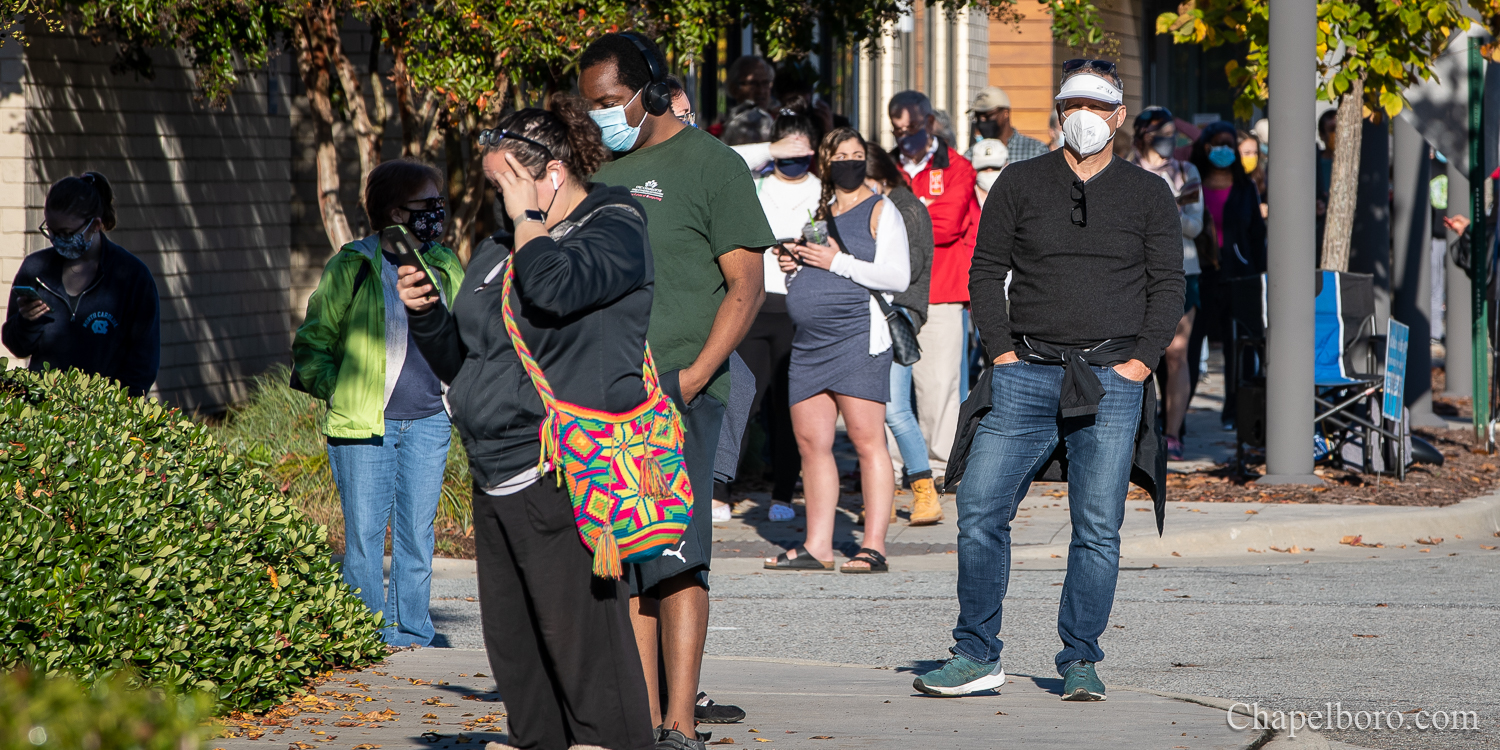A new report on child poverty rates across the United States shows Orange County and Chatham County rank highly in North Carolina, while the state falls short compared to most other states’ rates.
The report from the non-profit organization Save the Children examines the percentage of children between the ages of infancy and 18 years old who live in poverty, as well as other metrics like child mortality and food insecurity rates. According to its data, the group says North Carolina ranks 31st out of the 50 United States with the average child poverty rate of 20.2 percent. That rate is an improvement for North Carolina from previous years, moving the state up from the 35th ranking it was given in 2018. Out of the entire U.S., New Jersey had the lowest rate with 13.5 percent and Louisiana had the highest with 26.5 percent.
Locally, Save the Children found Orange County does well at protecting children’s health. The county has the second-lowest child poverty rate of 10.8 percent and the lowest food insecurity rate among children in North Carolina at 15.5 percent. That ranks the county 279 out of 2,617 United States counties that had enough data to be included in the rankings.
The county falls away from the state’s top tier when it comes to the high school dropout rate, however, which is measured as the percentage of ninth-grade cohorts fail to graduate in four years. Orange County’s rate is 11.6 percent, which is closer to the middle of North Carolina’s other counties.
Chatham County is in the top 20 counties in the state when it comes to low child poverty rate, ranking 19th with a rate of 14.2 percent. Its child food insecurity rate is 18.5 percent while its high school dropout rate is 14.1 percent.
Overall, Save the Children says the United States still greatly struggles with food insecurity and helping children in rural areas. The study said rural child poverty rates are higher than urban rates in 41 of 47 states with rural designated areas and 84 percent of the counties where the most children struggle with hunger are both rural and high poverty.
To view the full report and interactive map with 2020 state rankings based on child poverty rates, visit Save the Children’s website.
Chapelboro.com does not charge subscription fees. You can support local journalism and our mission to serve the community. Contribute today – every single dollar matters.
Related Stories
‹

On the Porch: Dr. Jim Crawford - September News RoundupThis Week:
Born into a blue collar and agricultural clan in rural Pennsylvania, Dr. Jim Crawford was the first in his family to graduate from college. Earning his PhD from the University of North Carolina, he taught US and World History at several universities in the piedmont North Carolina for several decades. He served as chairman of the Chatham County board of commissioners, and currently serves as trustee for Central Carolina Community College. He is a firm believer in American democracy and trusts that the constitution will hold firm now as it has in past crises despite the broken, distempered electorate.

Local U.S. Rep. Valerie Foushee Boycotts Trump's Congressional Address, Citing President's LiesOrange, Durham and Chatham County's U.S. Rep. Valerie Foushee did not attend President Donald Trump's address to Congress Tuesday evening.

Tourism Spending Increases for Orange, Chatham Counties After 2020 LowsNorth Carolina recently received its annual tourism report. Locally, Chatham and Orange counties experienced healthy rebounds in revenue.

More Than 2 Million North Carolinians Cast Votes in First Week of Early VotingAs of Wednesday, October 22, more than 46 million people have voted in the 2020 general election according to the Unites States Elections Project. Michael McDonald, a professor of political science at the University of Florida who specializes in American elections, manages the project. McDonald, who tracks early voting numbers by the minute, said it’s possible […]

North Carolina Could Lose Billions as 2020 Census Deadline ApproachesIn late July it was estimated that North Carolina is at risk of losing more than $7 billion dollars in federal funding if the remaining four million uncounted residents do not participate in the 2020 Census before its deadline at the end of the month. In mid-August, the US Census Bureau moved the 2020 Census […]

State Gives $35 Million to Local Health Departments for COVID-19 ResponseThe North Carolina Department of Health and Human Services is allocating $35 million in federal funding to local health departments across the state to support their COVID-19 responses. The announced was shared in a release from Governor Roy Cooper’s office on Tuesday, saying each county would receive at least $90,000 with additional funding determined by population size […]
![]()
North Carolina Surpasses 1,000 Deaths from COVID-19; State Officials 'Concerned' by TrendsNorth Carolina has surpassed 1,000 deaths of residents from COVID-19, according to state health officials. The latest data released from the North Carolina Department of Health and Human Services on Monday said the state has recorded 1,006 deaths, up from 996 on Sunday. More than 36,400 positive cases have been reported in North Carolina and […]

North Carolina Crosses 1,000 Positive COVID-19 CasesNorth Carolina has more than 1,000 positive COVID-19 cases reported, according to the state’s Department of Health and Human Services. The department updated its totals on Sunday morning, reporting 1,040 positive cases of the novel coronavirus across the state. Approximately 18,945 tests have been completed and four North Carolinians have died as a result of […]
![]()
EPA Drops 26 North Carolina Counties from Emissions ProgramThe U.S. Environmental Protection Agency has dropped 26 counties from North Carolina’s requirement for vehicle emissions inspections. A statement from the EPA said it finalized a rule approving the state’s revision of its air quality plan. The agency said the action removes regulations that are no longer needed and is expected to save consumers money. […]

Some Roadways Reopening in Central North Carolina After Hurricane Florence FloodingSome roadways in Chatham and Durham counties are reopening following washouts earlier this week due to heavy rains from the remnants of Hurricane Florence. The heavy rains early Monday morning caused widespread flooding issues and caused many roads to be closed. Crews have been working to reopen those roadways and assessing some more long-term project. […]
›









